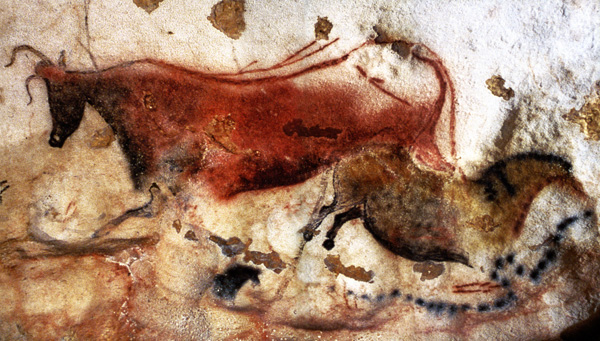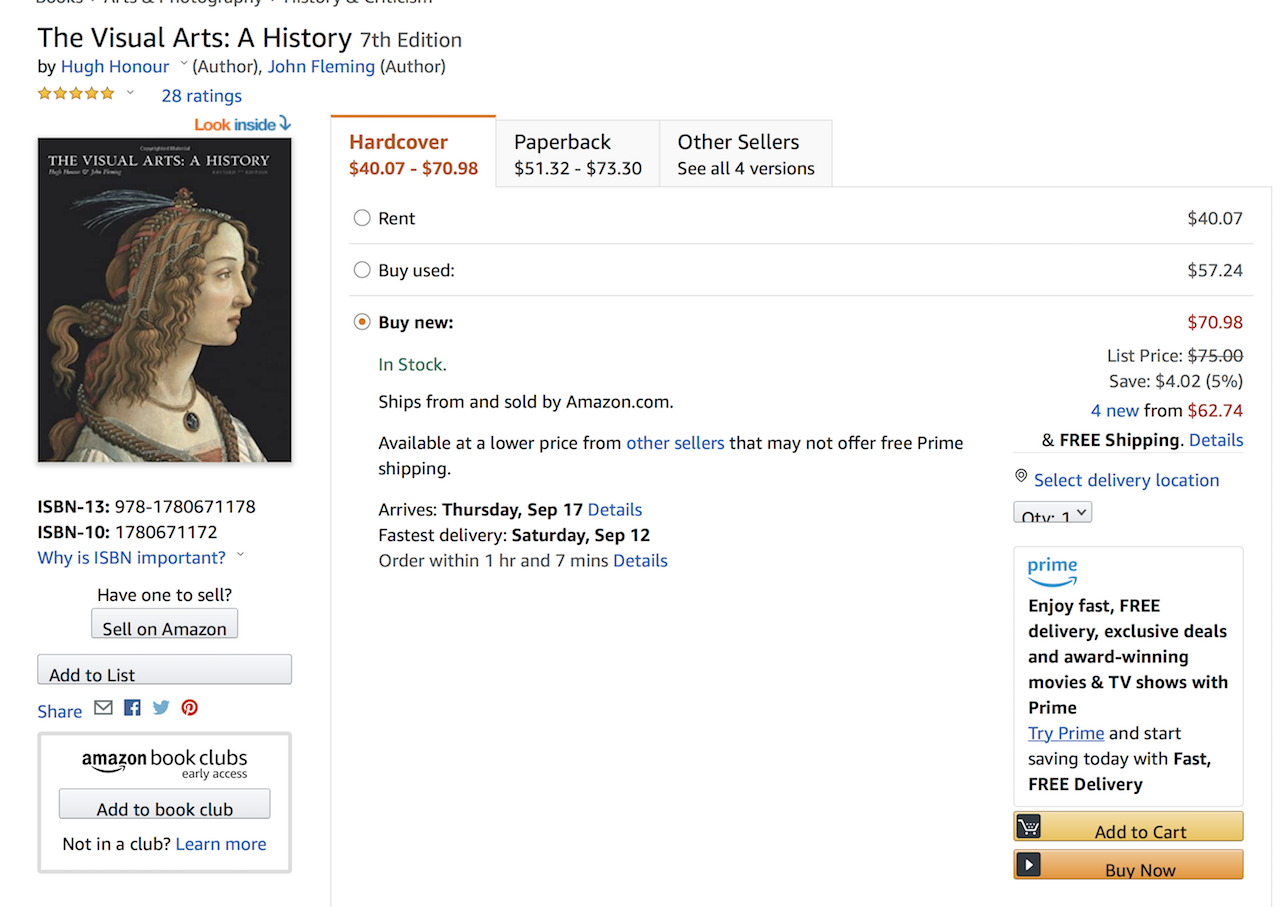Week 1
Human beings cannot live without art. They never have. The caves at Lascaux date back to possibly 30,000 years BC. They demonstrate that before agriculture, before the domestication of animals, people on earth created works of art. At Goeblecki Tepe, at Skara Brae on the Orkney Islands, or in the Egyptian desert, all over the world at all times, human beings have turned to some kind of artistic expression of who they are. Our first records of human life comes from their art. All human beings have made art. Human beings live painful, difficult lives and art allows them to escape that pain as well as allowing them to find fulfillment, meaning and even a kind of mystical union with the forces of nature. Art is a human creation. It is part of the human world. Animals do not care about art with one exception: music. Cows love Bach and give more milk with Bach. Chickens hate rock and rap and produce speckled eggs showing their discomfort with the nasty loud noise of contemporary rap. Monkeys made art only for bananas. They did not really care about art. Art is of the human world.
Our thirty weeks will allow us to see what this artistic world looks like.
REQUIRED READING
We are offering this book title to you as a "Required" book, but of course if you're schedule does not allow more reading then you can save this for later. What the author has done, a Professor of Philosophy at Columbia University, so to write a short book of about 100 pages in which he attempts to tell you why we need art, what art does, and what the relationship is for the human being and the arts. It is the best all-around introduction to the field of aesthetics that anyone has written since Aristotle.
RECOMMENDED READING
If you want the book above just click on the icon of the book and it will take you to that book within the Amazon catalog.
We want one book that will serve us all year for general background to both art and history. There are tow very famous ones, Helen Gardner and H. W. Janson. Both Janson and Gardner have been used in universities for art surveys for decades and because of this the price and availability of both volumes has now surpassed 100$ for a new copy of either. And used copies are very hard to get because university undergraduates have snapped them up every year. So all of this brings us to Hugh Honour. Honour was a very great British art historian who lived most of his life in Italy. He wrote many good books and along the way he wrote one of the very best one-volume surveys of art that now turns out to be the best choice for us. It is beautiful, not outrageously overpriced, and available. I have printed a screen shot of the page from Amazon to point out that you must be careful. You do not want to "rent" the book. That is very cheap undergraduates. And as you can see there are many options in the price category. A brand new one is about 70$ and we just received several at the Institute and they were perfect. It is a very beautiful especially since it has on its cover the magnificent Simonetta Vespucci.



